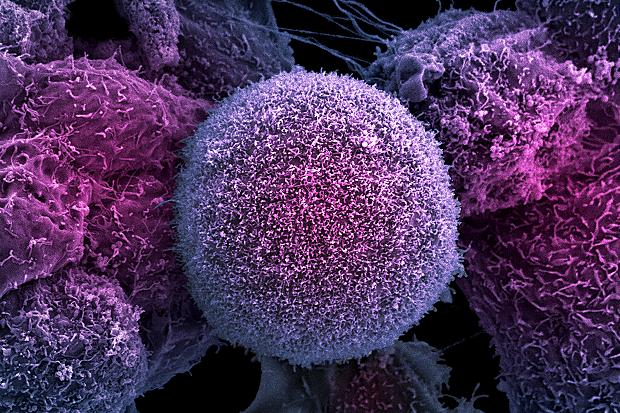
<< Back to: bone cancer
Fibrosarcoma
Fibrosarcoma is a malignant, deadly bone cancer. Fibrosarcoma is very similar osteosarcoma (almost identical) when it comes to appearance, symptoms, prognosis and treatment - except that it produces cancer connective tissue instead of cancerous bone tissue - hence the name fibro (indicating fibrous approach). The cancer is normally detected in people between the ages of 10 and 25, but can also occur at other ages. This form of cancer usually affects the knee (in over 50% of cases), but can occur in any bone in the body. It is a very serious, fatal bone cancer diagnosis.
- Paget's disease and radiation therapy may predispose to fibrosarcoma
Fibrosarcoma can be diagnosed with blood tests, urine tests, bone scans (Dexa examination), X-ray examination and imaging - and biopsy where necessary. Paget's disease, radiation therapy and sickle cell anemia can all provide the basis for the development of this form of cancer. The form of the cancer spreads to the lungs by exacerbation (metastasis), and provides a basis for severe lung cancer.
- The treatment consists of chemotherapy and surgery
Treatment of fibrosarcoma is demanding and complex. Among other things, drug treatment, surgery and chemotherapy are used in the treatment of fibrosarcoma. Normally, one will first try drug treatment and chemotherapy. Then you will try to operate on the cancerous tumor. Surgeons must be extremely careful when removing such cancer, as a wrong cut can lead to cancer cells being left in the area - which in turn can lead to a later onset of the cancer. Due to great advances in fibrosarcoma surgery, one can now save the affected leg or arm - previously, in most cases, the affected area had to be amputated.
- Fibrosarcoma has a poor prognosis
About 65% of those who undergo chemotherapy survive for 5 years after the diagnosis is given, provided there has been no metastasis (cancer spread) to the lungs. If the toxin destroys all the cancer cells, you have a 90% chance of living for at least 5 years. It's a gloomy and sad forecast.
In the event of deterioration or similar, people should go to check to see if any development or further growth has occurred. This is normally done with systematic blood tests, urine tests, x-rays (see imaging) to estimate any size development or bloom. Every six months or annually, an X-ray may be necessary, but it may be taken less frequently if no further development is seen.
Image: Fibrosarcoma in the arm
Cancer of the arm: Here we see clearly how the fibrosarcoma has infiltrated the bone structure in the arm and caused extensive destruction.
Also read: - You need to know this about bone cancer! (Here you will also find a great overview of benign and malignant forms of bone cancer)



Leave a reply
Want to join the discussion?Feel free to Contribute!